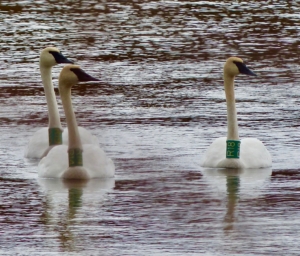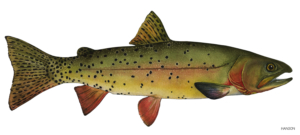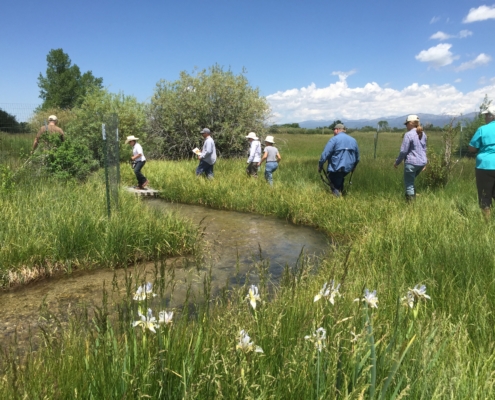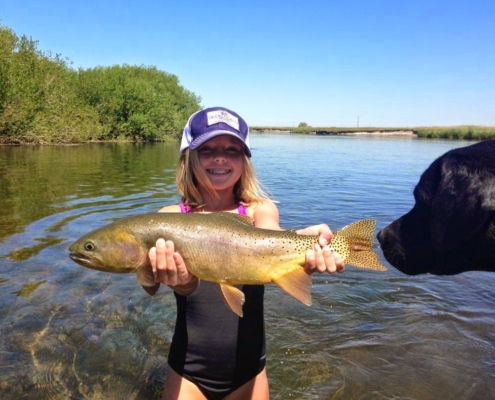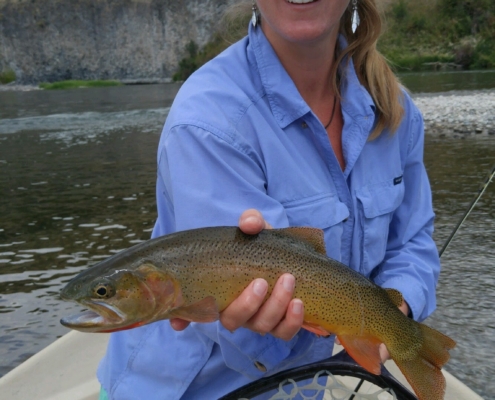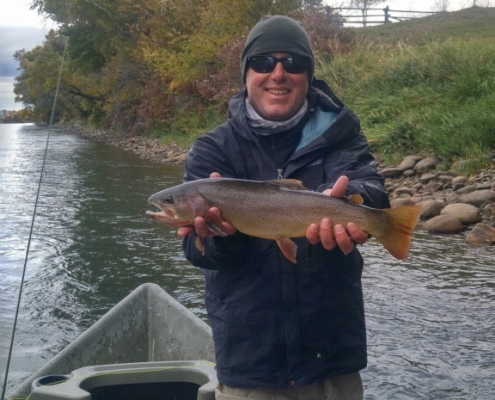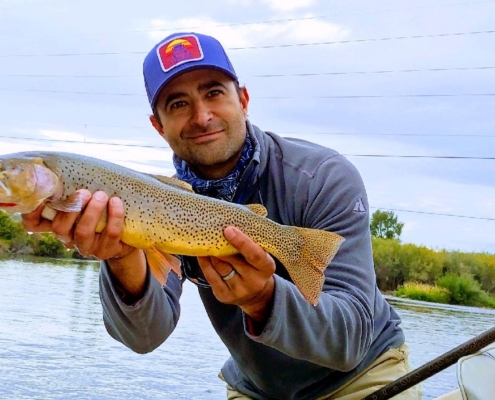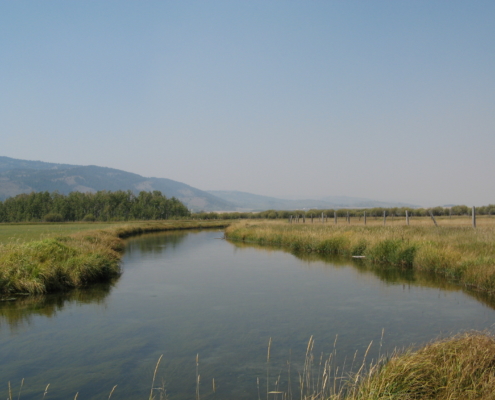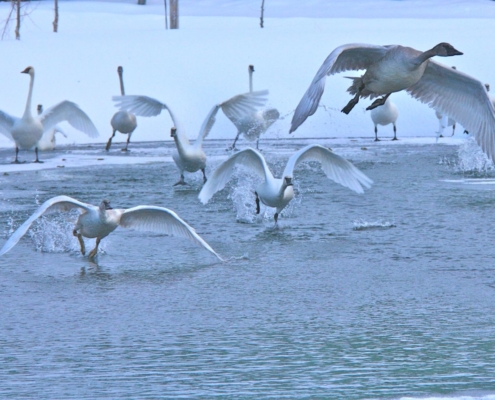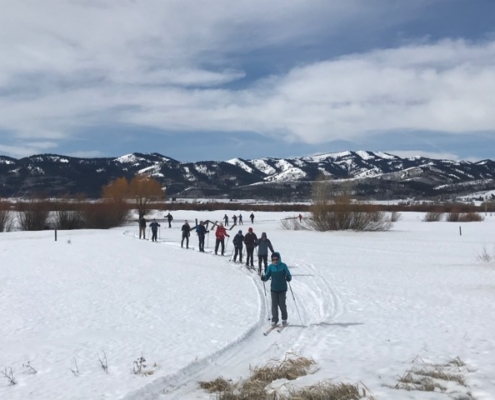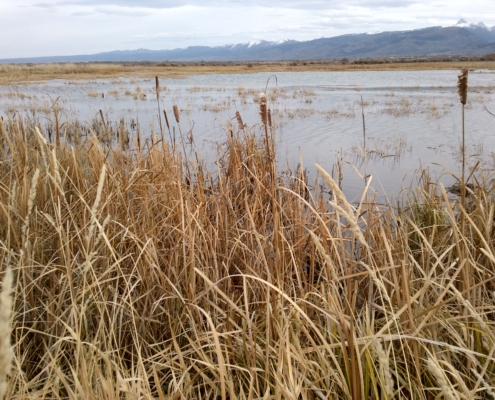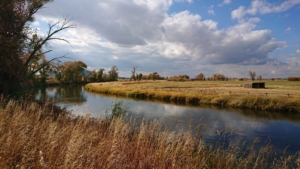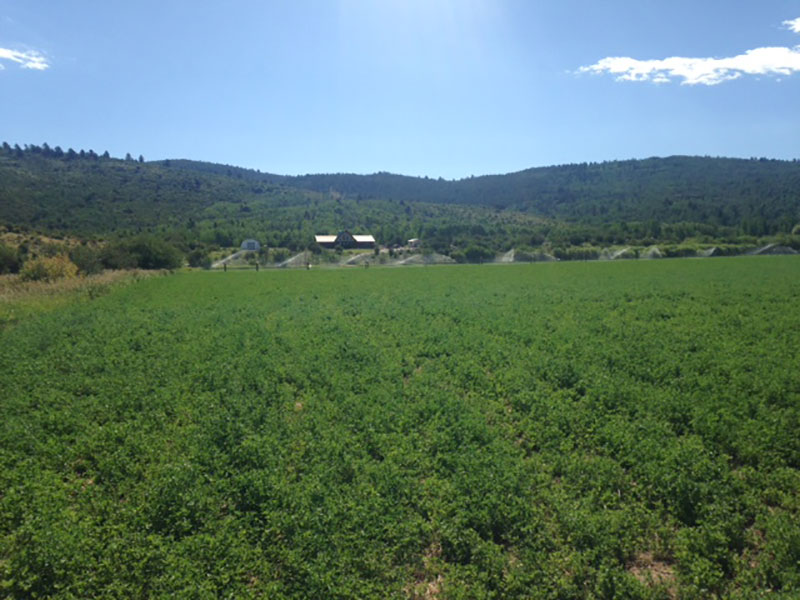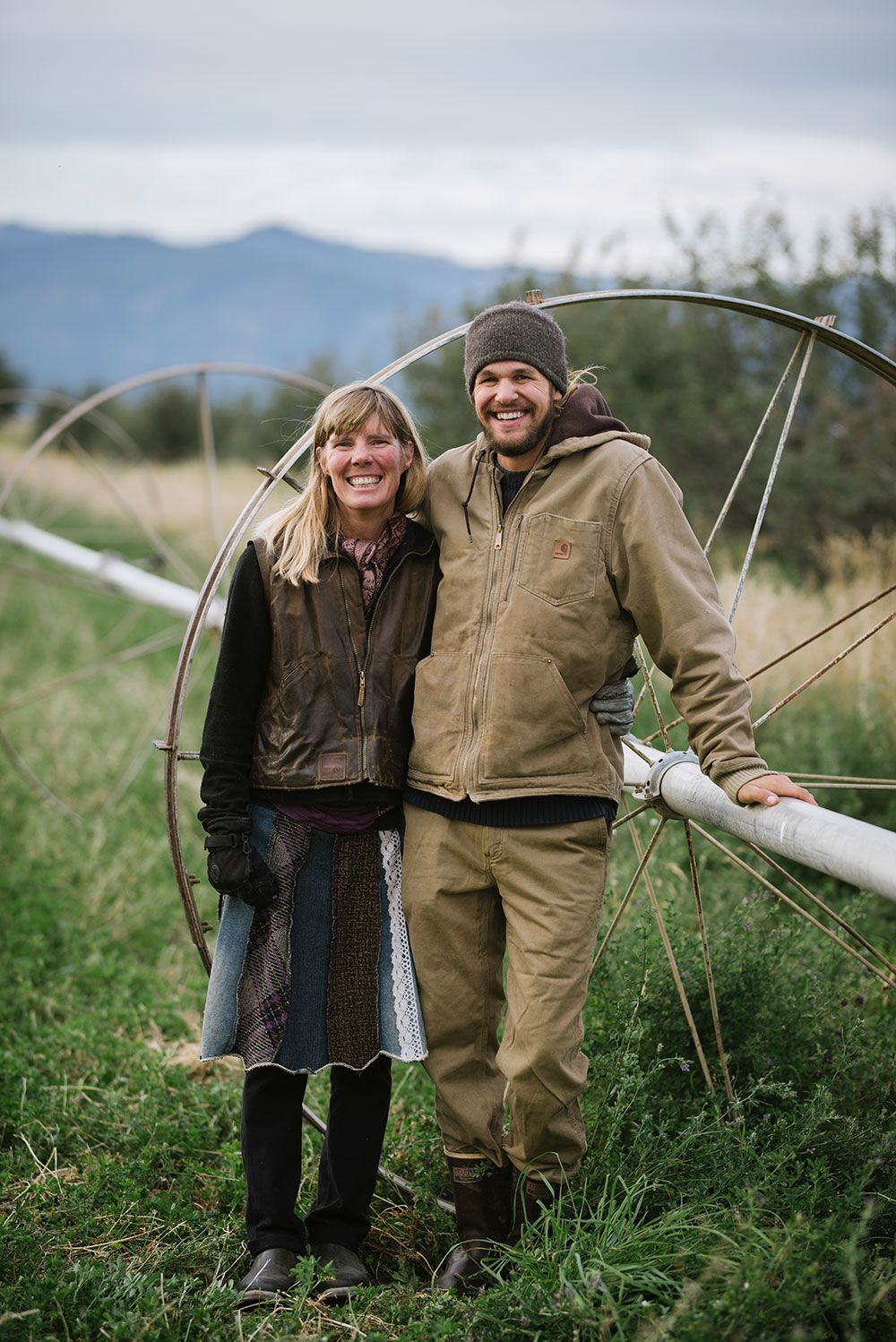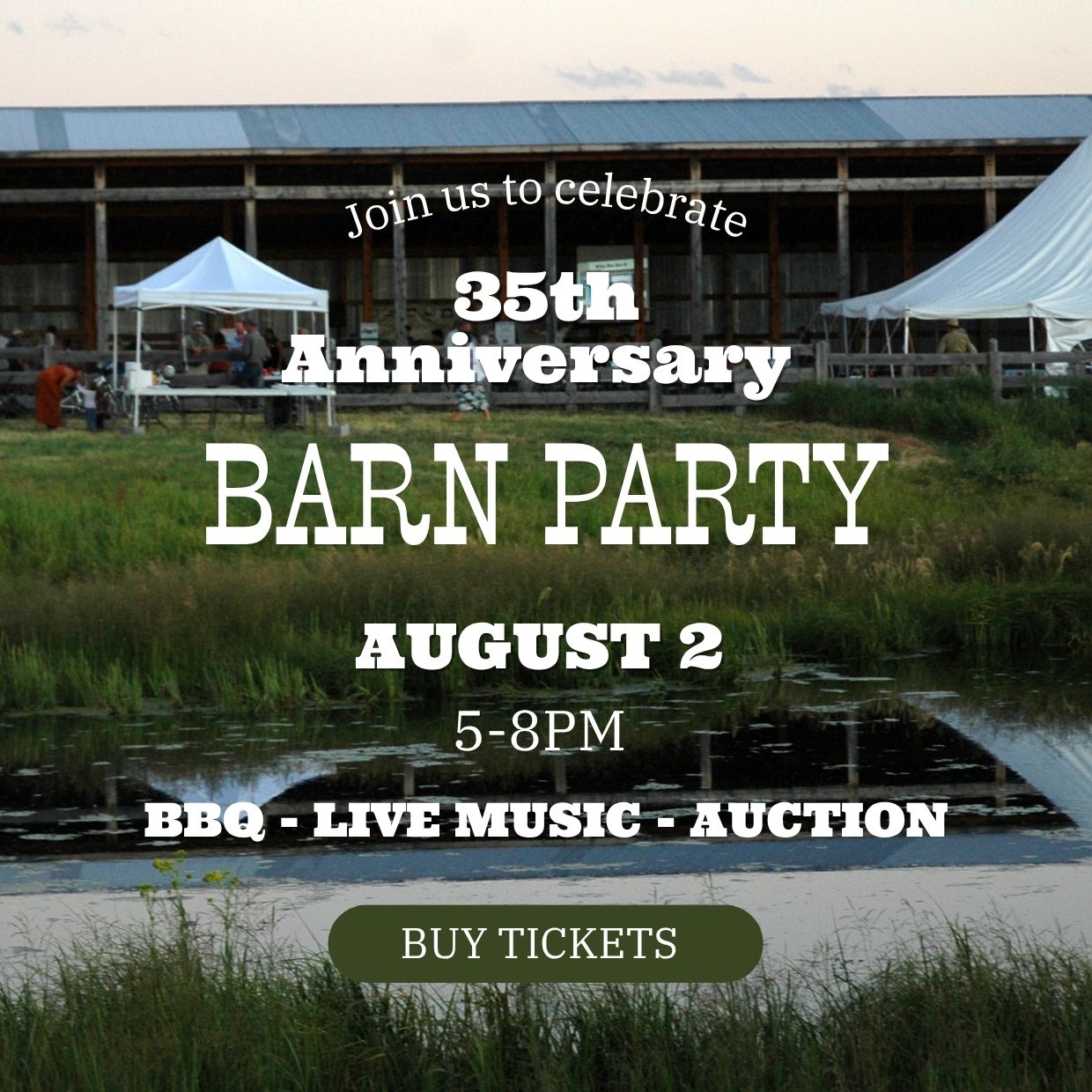Trumpeter Swans in Teton Valley
Trumpeter Swans are one of our region’s most iconic wildlife species, yet one of the rarest breeding birds in the west. They are among the largest waterfowl species in the world and exhibit highly cognizant behavior, have strong family bonds, and can live up to 25 years in the wild. Trumpeter Swans were once widespread throughout North America, but their populations neared extinction in the early 1900s. Thanks to conservation efforts, Trumpeter Swan populations have risen to fairly stable numbers throughout most of their range, although the Rocky Mountain Population remains a conservation concern, with a total of only 100 known nests throughout Idaho, Montana, and Wyoming. Continued habitat loss, degradation, and disturbance at nest sites have led to perennially low nesting success for Trumpeter Swans within the Greater Yellowstone Ecosystem (GYE), making this a major conservation priority for recovery.
The Rocky Mountain Population is comprised of two distinct population segments – a Canadian breeding segment with nesting occurring throughout British Columbia, Alberta, and Yukon Territory, and a U.S. breeding segment, with breeding centered around the Greater Yellowstone Ecosystem. During winter, both breeding segments rely on ice-free waters and available leftover agricultural crops. Eastern Idaho supports an annual average of 50% to 75% of the entire Rocky Mountain Population in winter, with the Teton, Henry’s Fork, South Fork, and Main Snake Rivers serving as critical winter resources.
Teton Valley supports roughly 30,000 acres of wetlands but previously offered little breeding habitat for Trumpeters due to a lack of marsh type wetlands. During the past 30 years, Teton Valley has received very little non-winter use by resident Trumpeter Swans, primarily because there were very few suitable pond or marsh habitats. However, Teton Valley serves as an optimal location for restoring Trumpeter Swan nesting due to its location proximal to other Greater Yellowstone Ecosystem nesting sites and results of strategic resource protection and enhancement.
Since 1990, Teton Regional Land Trust (TRLT) has worked with willing private landowners, the North American Wetland Conservation Council, the US Fish and Wildlife Service (USFWS), the Idaho Department of Fish and Game (IDFG), and other partners to conserve over 11,000 acres of important wildlife habitat, primarily along the Teton River corridor and its associated wetlands. In addition to protecting habitat from residential development via permanent conservation easements, the combined efforts of the aforementioned partners have restored and enhanced several thousand acres of wetlands, including the creation of high-quality marsh and shallow water pond habitats on easement-protected lands. The successes of our wetland protection and restoration program, combined with our strategic location, have created a unique opportunity to re-establish Trumpeter Swan nesting in Teton Valley in an effort to bolster the at-risk U.S. breeding segment, and secure the heritage of breeding Trumpeter Swans in the Greater Yellowstone Ecosystem. Conservation easements will help ensure that habitat quality can be maintained over time even if land ownership changes. Having suitable nesting and breeding habitat that is permanently protected will determine the successful return of a stable Trumpeter Swan population in the U.S.
In 2012, the Teton Valley Trumpeter Swan Restoration Project was formed by partners including TRLT, IDFG, USFWS, Intermountain Aquatics, and additional supporters and volunteers. The project is a long-term effort to re-establish Trumpeter Swan nesting in Teton Valley by releasing captive-bred Trumpeters onto protected wetlands in an attempt to trigger the swan’s instinct to bond with and return to their natal wetland and eventually breed, as well as by continuing strategic land protection efforts. Translocating captive-reared Trumpeter Swans to occupy a site that offers optimal habitat quality is a great opportunity but comes with its challenges. The strategy works to counteract the long time it takes for Trumpeters to colonize new breeding areas and to alleviate current threats to nesting success since habitat quality and levels of disturbance can be controlled. This strategy gives the released Trumpeters the best chance at nesting success and propagating nesting at other wetlands throughout the area. Translocations also serve to attract wild swans since released Trumpeters act as indicators of habitat quality, and work to subvert wild Trumpeter Swans instinct and conditioning to avoid levels of human disturbance (such as tractors, farming activity) that in reality pose no threat. This created an expansion of viable breeding site occupancy throughout a number of suitable wetland sites in Teton Valley and throughout the GYE. Through diligent monitoring by TRLT staff, partners, and the public, the translocated Trumpeters have often been observed returning to their release sight with unmarked, wild Trumpeters and have exhibited early pair-bonding behaviors, marking major steps forward for nesting in Teton Valley. The partnership held its sixth Trumpeter Swan release in Teton Valley this summer releasing six cygnets onto a protected wetland.
Our previously released Trumpeter Swans, as part of the Teton Valley Trumpeter Swan Restoration Project, wear green neck collars with white alphanumeric codes, but this year’s cygnets have a green leg band instead. Reported sightings from the community are a major part of the project. If you observe green-collared or green leg-banded swans in our region, please notify the Teton Regional Land Trust. For more information or to support the project, please visit www.tetonlandtrust.org or contact Nicole Cyr via email at nicole@tetonlandtrust.org.
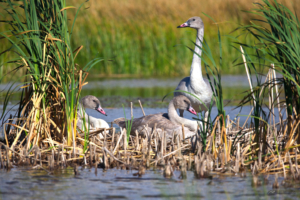
“I had the privilege to see 5 Trumpeter Swan Cygnets that were released just a few days prior in the Teton Valley in Idaho. The goal is to place the Cygnets with a surrogate mother who will teach them to survive with the hope that the Swans will eventually return to the place that they learned to fly, to nest and have offspring of their own in the Teton Valley. It was a great experience, thanks to Tim (Brockish, Board Member) for inviting me.” – RH Miller
Photo (above) by Trish Boyd; Photo (on left) by Tom Vezo
